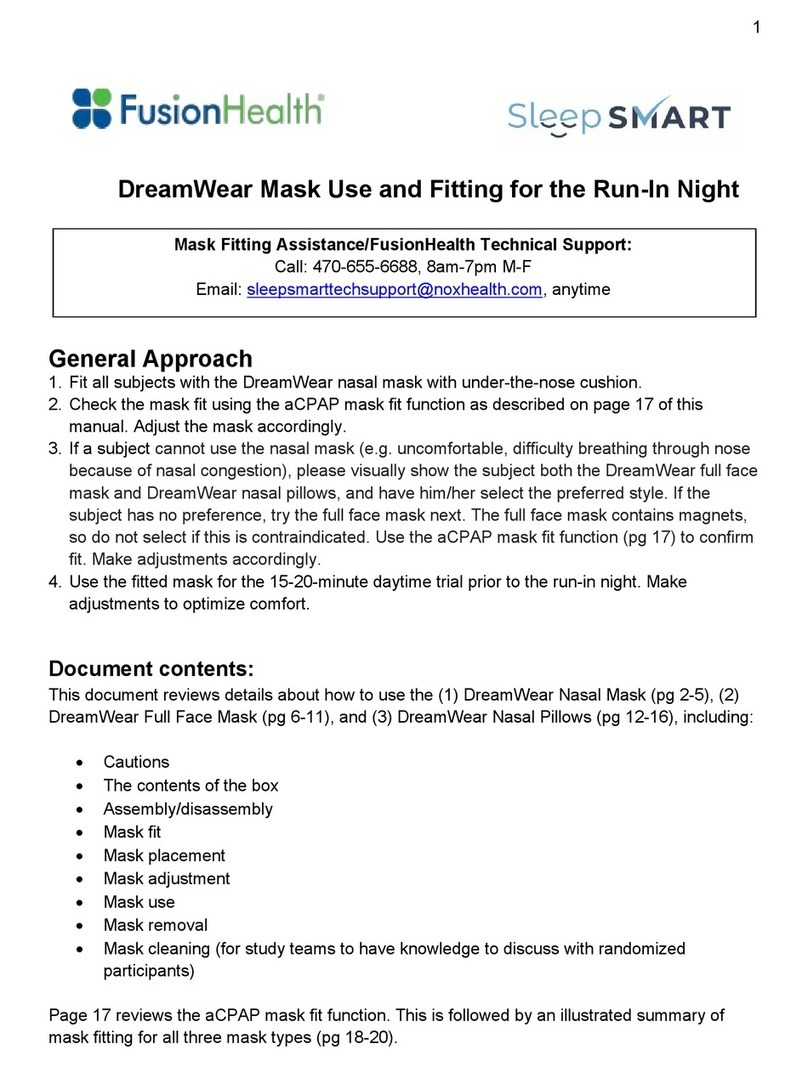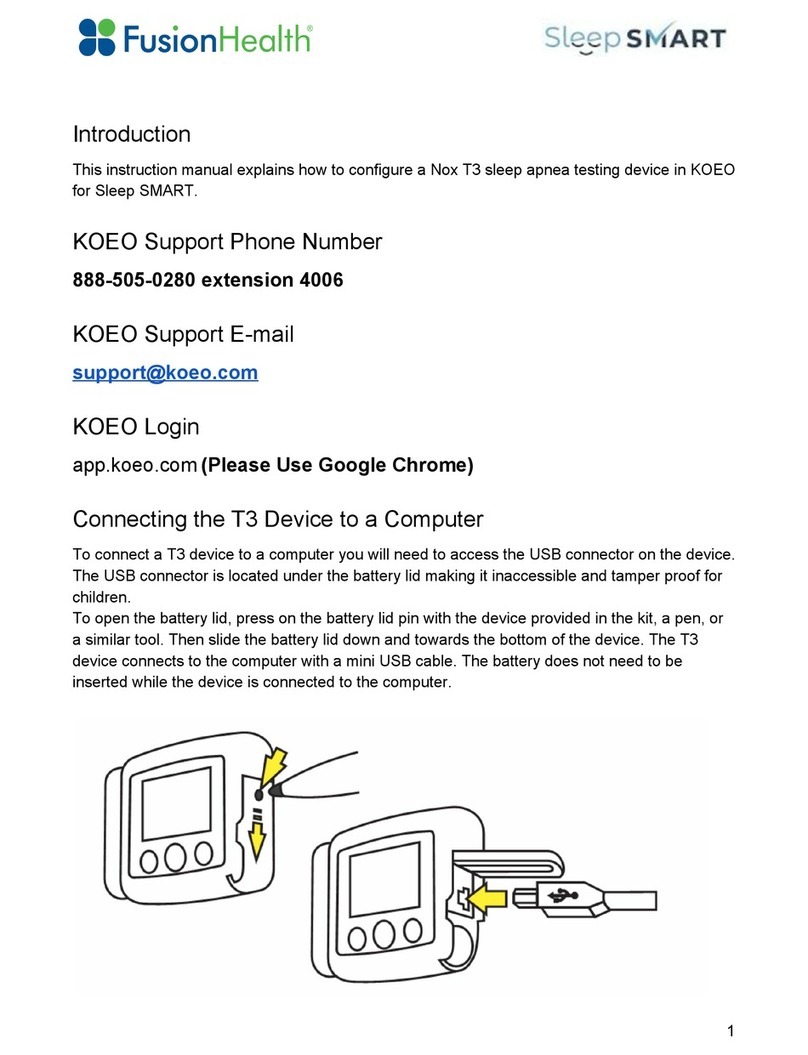
Now that supplies are set:
1. Make sure the power is connected.
●Adjust the humidification level, if required.
●Fit the mask as described in the mask user guide.
●Press the Start/Stop button or simply have the subject breathe into the mask. The Smart Start
function will turn on the device. The green light indicates the device is off, and the blue light
indicates it is on.
●Have the subject lie down and arrange the air tubing so that it is free to move if he or she turns
during their sleep.
●To stop treatment at any time, press the Start/Stop button and remove the mask, or simply
remove the mask. The SmartStop function will turn off the device.
2. Have the participant try to use CPAP for 15-20 minutes prior to the run-in night.
•Have the participant use CPAP sometime before bed. If possible, the participant should be lying
down and doing a relaxing activity such as reading or watching TV.
•This gives the participant the opportunity to acclimate a bit to CPAP
•It also allows an opportunity for mask adjustments before the participant is trying to sleep at
night.
3. Using PAP at Bedtime
●Fill the water tub with distilled water only.
●Put on the mask and start the device. Remember that the device will increase flow if it senses a
leak.
●Place the tubing above the headboard or between the pillow and the wall. Bringing it over the
pillow in this manner may help keep it out of the way during sleep.
4.The SmartStart Feature
The aCPAP S10 device has a comfort feature called SmartStart / SmartStop that is enabled. This
feature will start the device automatically when the subject breathes into the mask and then stop the
device automatically when the subject removes the mask. If a subject does not like the SmartStart
feature, it can be disabled by contacting the Sleep SMART Care Team. Please note that if the device
is turned on via the SmartStart (the subject starts to breathe through the mask), and study staff then
push the start/stop button, the device will then be in the off mode.
5. Restarting PAP during the Sleep Cycle
●If it is necessary to interrupt use of PAP (to use the restroom, for example), stop the device as
noted above.
●Subjects can either disconnect the tubing at the mask, and keep just the mask on, or take the
mask off and then put it back on when they come back to bed.
●When they return to bed, they should reassemble the connection or reapply the mask and push
Start/Stop again or simply breathe into the mask. As before, the machine will gradually ramp
up the pressure until it reaches the targeted range.





























